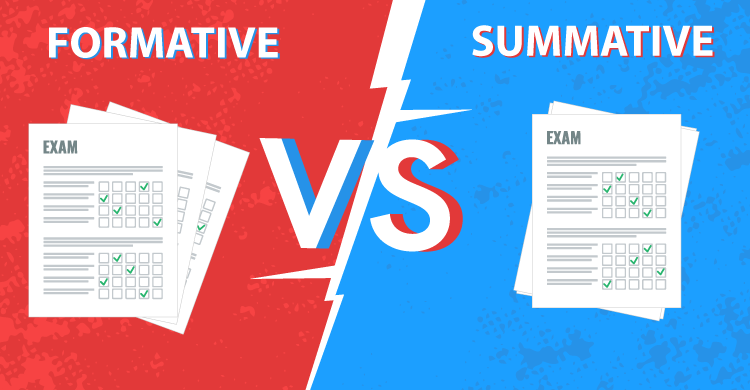Based on Common Formative Assessment
Prior to the important assessment research from Dylan Wiliam and Paul Black (1998), there was little understanding in our profession about formative assessments. This research found that there is a significant positive standard deviation impact on student learning when teachers use formative assessments to guide instruction.
While the research about formative assessment was published in 1998, it wasn’t until Rick Stiggins (2004) began to write and teach about Assessment of Learning (summative) and Assessment for Learning (formative) that teachers began using formative assessments more regularly in their classrooms to guide their work. For schools and districts that operated as professional learning communities, this switch meant moving from what were originally called common assessments (typically common unit tests) to using common formative assessments—shorter, more frequent assessments.
Using formative assessment effectively
Knowing that there is strong research about the impact of using formative assessment, it’s important that collaborative teams write and use these assessments in their work. To effectively use them, teams unwrap their essential standards into learning targets. Learning targets are the smaller skills and concepts a student must know to master the standard. Formative assessments are more diagnostic because they provide information to the team about where the learning stopped when students are having difficulty.
Consider, for example, a team teaching the standard “Develop and use a model to describe the function of a cell as a whole and ways parts of cells contribute to the function.” At the end of the learning, the student would be able to use a cell model to explain how each of the organelles contributes to the overall function of a cell. During the learning, the student would likely develop his or her own model of a cell and refine the model as they explored various plant and animal cells in the lab. They would learn about cell parts and their roles. The collaborative team would develop short common formative assessments to be used during this learning.
So, for example, they may ask a question about the difference between unicellular and multicellular organisms. A student who has looked at cheek cells under a microscope (which appear as individual cells) might misunderstand and call them unicellular based on their appearance. This short assessment lets teams see that these students missed the fact that cheek cells come from a human who is, of course, multicellular. By stopping during the learning to check, the team catches a common misconception and is able to quickly get the student(s) back on track. This means that little time is wasted if a student misses an important concept.
The team focuses its common formative assessments around learning targets that come from essential standards so that they are able to provide students who haven’t yet learned the guaranteed curriculum extra time and support to do so. CFAs are short and focused on a small number of learning targets. Collaborative teams must make sure the questions they use are written at the rigor of the learning targets identified in the standard. Time after each CFA is built into pacing guides, to assure the team can respond to students who need more time and support. The team also develops extension activities for students who mastered the target(s) during the initial instruction. This means that the data from common formative assessments is designed to let the team know learning target by learning target which students need help.
Summative assessments’ role
So, what about summative assessments? The purpose of summative assessment is to look at the standard, to see if a student can put all of the smaller learning targets together to demonstrate proficiency on the standard itself. For example, a student who can blend letters to read words but can’t comprehend the text needs more time and support. Or a student who knows the names of cell parts but can’t describe how they contribute to the overall function of the cell is missing key learning. In a professional learning community, common summative assessments help the team develop common pacing for their curriculum. This common pacing is important, as they write and use common formative assessments to guide instruction. Common summative assessments also help the team agree on what proficiency for a standard will look like.
For these reasons, formative and summative assessment each have important roles in monitoring student learning, and high-performing teams use both in their work. We recommend that when a team unwraps each of its essential standards to identify the learning targets, they also take some time to discuss what the summative assessment would look like. So, in the above science example, the team agrees that rather than a traditional test at the end, students will use a cell model to explain various concepts learned in the unit. The team doesn’t have to write the assessment at this time but will have agreement about what it will look like. Then the team looks at the learning targets that have been identified. They ask themselves, which of these learning targets is important enough for us to stop and formatively assess before we move on? They should consider learning targets that often lead to misconception, those that are prerequisite to future learning, and those that are necessary for students to know (Bailey & Jakicic, 2019).
In a balanced assessment system, there are also other summative assessments that guide the work of the team: benchmark assessments and end-of-the-year assessments. These are often written by outside professionals rather than the team itself. The team, however, can learn a lot by examining released items that reveal the rigor expected in the standard. Benchmark assessments can be used to make sure all students are making appropriate progress throughout the year and can help monitor whether students receiving interventions are getting the right amount of help. End-of-the-year assessments can be used to set SMART goals and help teams determine if they are using quality materials and pacing in their work. Sometimes teams will mistakenly try to use benchmark assessments as their common formative assessments. This won’t work effectively for several reasons. Formative assessments are written around smaller skills, in order to be more diagnostic. The data provided by benchmarks are around standards and domains—not learning targets. Common formative assessments are tied to learning targets that have recently been taught. Benchmark assessments are rarely tightly linked to the curriculum a team is using.
High-performing teams know how important both formative and summative assessments are in providing the best response possible for all their students and use both to guide their work.
References:
Bailey, K., and Jakicic, C. (2019). Make it happen—Coaching with the 4 critical questions of PLCs at Work®. Bloomington, IN: Solution Tree Press.
Black, P., and Wiliam, D. (1998). “Inside the black box: Raising standards through classroom assessment,” Phi Delta Kappan, 80(2), 139–144.
Stiggins, R. J., Artner, J. A., Chappuis, J., and Chappuis, S. (2004). Classroom assessment for student learning: Doing it right—Using it well. Portland, OR: Assessment Training Institute.
[author_bio id=”76″]






